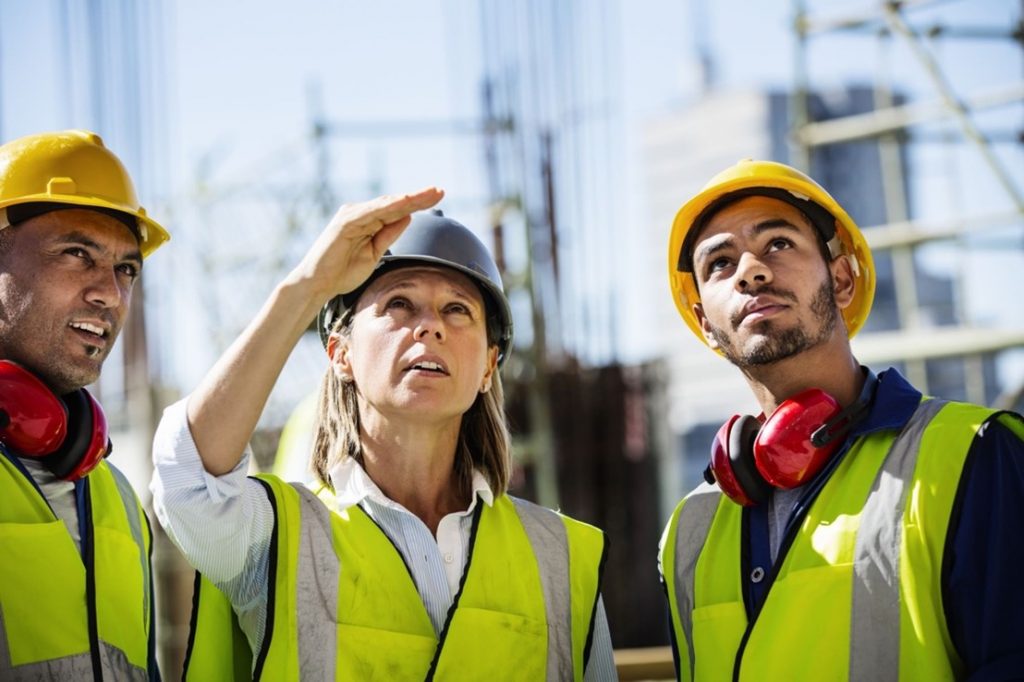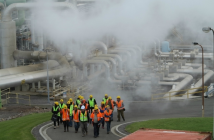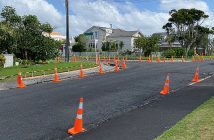How widening the net, in search of diverse talent, is key to sustaining the industry

One of the biggest challenges facing the construction industry is the shortage of people and skills throughout the sector. This is impacting its capacity to deliver the growing pipeline of construction projects.
“Construction, as a sector, is made up of an expansive variety of creative and rewarding careers yet; we are struggling to attract and retain a diverse range of people into these jobs,” says Construction Sector Accord Director, Dean Kimpton.
Women make up only 18 per cent of the construction-related workforce in New Zealand, while Māori and Pasifika are underrepresented in the skilled professions and at leadership level.
“We want to encourage more diverse talent into the construction sector and shift away from our traditional way of attracting, recruiting, retaining and growing people – the status quo isn’t working,” says Kimpton.
This has prompted the Construction Sector Accord to join forces with Diversity Works New Zealand, the national body for workplace diversity and inclusion.
“There is a lot of work that currently goes into attracting people to the sector,” says Diversity Works New Zealand Chief Executive Maretha Smit.
“There are those who believe that, if we get the recruitment pipeline right, the issue has been solved. I disagree. If we don’t build our construction workplaces with different cultures and support mechanisms to respond to the need of the diverse people, they will leave.”
“The Accord project will look at the culture of inclusion, alongside the issues of diversity, and then we will work with the industry and the non-dominant groups to establish what processes need to be put in place to retain them in the sector.”
Kimpton says the industry has exciting initiatives underway to meet some of these challenges through the work of the Diversity Agenda, the National Association of Women in Construction and Women in Trades, as well as organisations like Keystone Trust.
Smit says the work that the Accord is currently doing is at the diagnostic level.
“We know anecdotally of great work such as the women in trades initiatives, apprenticeship schemes, parental leave schemes, and so forth. We would like to know more – not only about what would attract talent, but also about what would retain talent.
“Often, it is not so much about what we need to start doing, but rather about what we need to stop doing. And there definitely are concerning behaviours that need to be stopped in order for the sector to attract and retain people from diverse backgrounds.”
The problem
“Most, if not all, industries have battled with diversity in their workforces,” says Smit.
She points out two main issues that make the construction sector a particularly tricky one to transition:
- some significant structural biases that were built into the fabric of how the industry operates, such as hours of work, facilities on site, physical requirements, etc;
- resistance in the dominant group to adopt more open-minded approach to diversity – and in instances where people from non-dominant groups are employed, the expectation is that they would assimilate into the dominant group, rather than to value the differences that they bring to the workplace (which often means that these people don’t stay).
“I think that it is safe to say that there typically is a higher level of tolerance of discrimination in traditionally homogenous groups, because there is less perceived risk in the group to individuals calling each other out.
“It also happens that those who express “politically incorrect” opinions are quietly admired, because they have the “guts to say what we all think”.
Smit says when those dominant groups are also the leadership of an organisation, this can create a very unsafe working environment for people who are not from those groups, with a tacit licence for workplace bullying and harassment.
“So, just on the surface of the existing dominant groups in the sector, people from diverse backgrounds will perceive a risk of psychological unsafety – whether they are women, people of colour, people with disabilities, or members of our rainbow community.”
What needs to change?
The construction industry has traditionally been identified by the presence of mostly homogenous groups. And though the times are a-changing, there is still a lot to be done for creating a sustainable diverse workforce.
“It needs to be recognised at the outset that women, as a group, are not a minority,” says Smit.
“While women are indeed a non-dominant group in this sector, they make up 48% of the workforce and this is where one of the biggest areas of opportunity presents itself for the sector.
“But this is about more than women – there are massive opportunities in this sector to improve social and economic outcomes for Maori. There is significant need for migrant workers to see themselves represented in leadership in order to feel safe. People with neurodiversities need different approaches to allow them to access and flourish in supervisory roles, and so the list goes on.
“I don’t think that the sector has an option but to shift. In order to attract a more diverse talent pool, the sector will have to demonstrate that it can be inclusive.
“This means that organisations in the sector will have to consciously mentor and showcase the work that people from non-dominant groups do, in order to normalise the fact that this is no longer an industry that only caters for the traditional homogenous group.
“Active development programmes and career fast-tracking programmes will need to be implemented to get a more representative group of people around the leadership table, and this will translate into conversations and actions to drive psychological safety for all.”
The Accord Project
The first step in The Accord Project, is to create a roadmap to gain clear understanding of current diversity and inclusion practices within the construction industry. Access to diverse groups is essential to knowing and understanding what they need and want.
“This research will give us robust data, and a sense of the diversity landscape across the various trades in the sector and how that’s impacted by organisation size,” says Smit.
“The assessment tools used in this research will also empower organisations to benchmark themselves against their peers and to develop organisation specific goals and interventions to create sustainable workforces.”
“It is the first time that in depth research is being conducted on diversity and inclusion practices across a whole sector.
“This is especially significant as the construction sector is critical to our economic recovery post Covid and the opportunity to expand into diverse talent pools will ensure that this recovery is more equitably shared across the workforce that was impacted by Covid.”
“We are looking forward to building a roadmap with Diversity Works New Zealand to transform the sector to better invest in and promote diversity, so that we can become a sector that welcomes and celebrates people of all identities and backgrounds,” says Kimpton.
“This partnership with Diversity Works will bring us one step closer to achieving this goal.”
The Construction Sector Accord is a joint commitment from government and industry to work together to create a high performing construction sector for a better New Zealand.
The Accord is partnering with Diversity Works New Zealand, the national body for workplace diversity and inclusion, to build a sustainable workforce for the construction sector.







